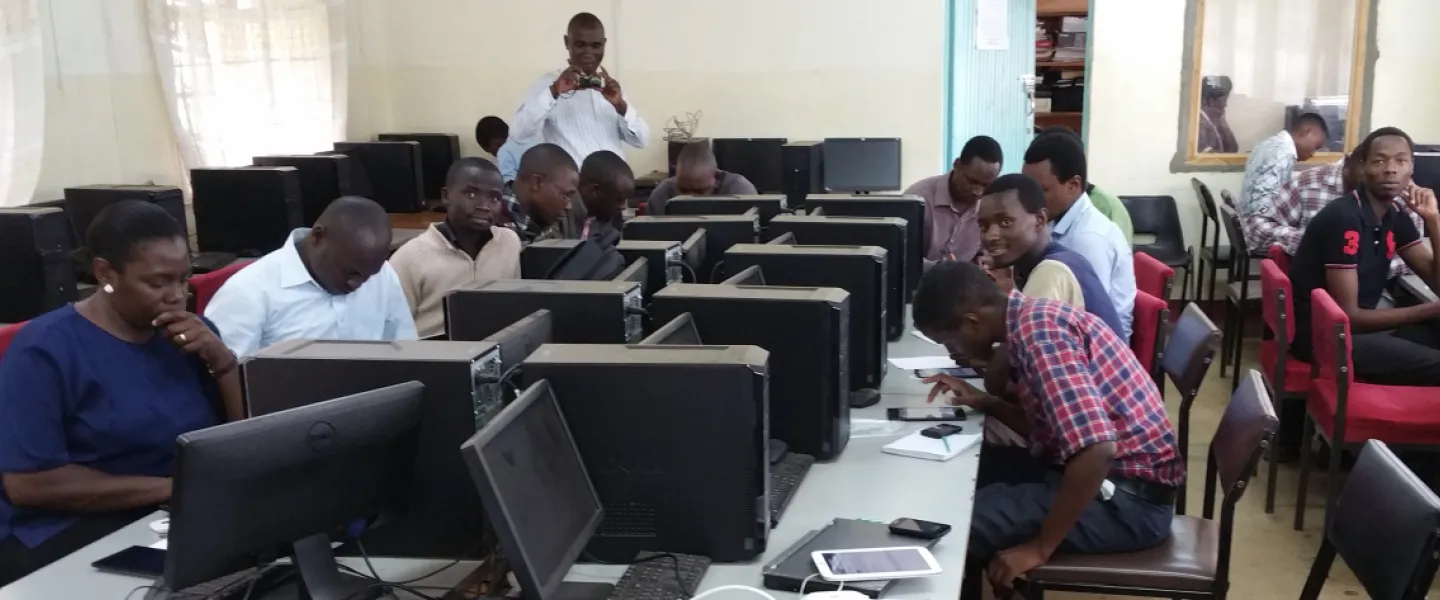
Gunnar Stefánsson, Professor at the Faculty of Physical Sciences recently returned from Kenya where he presented the tutor-web, an open learning system, at two universities. The latest version of the system no longer requires constant connection to the internet to complete assignments.
Tutor web is freeware in mathematics and statistics that Stefánsson has developed in collaboration with his colleague and former doctoral student, Anna Helga Jónsdóttir, Adjunct at the Faculty of Physical Sciences. The assignments are not meant to be exams but rather to answer and learn from. Once each exercise has been completed the students is notified immediately whether her/his solution was the correct one; and if not, the correct solution is given with explanations.
The idea was born 15 years ago. “At that time my students frequently copied each other’s assignments and I sometimes received seven answers all with the same little mistake. Furthermore, teachers were creating their material each in their own corner. Hence the idea for a learning system – tutor-web – where students could get their own teaching material and exercises and that teachers could access and use anywhere in the world,” said Professor Stefánsson. The system has since been in constant development and has proven extremely well in teaching large courses in calculus and statistics at the School of Engineering and Natural Sciences and preparing new students for their studies.
Stefánsson sought collaboration abroad early on in the development process as his vision was to have the material available in English so it could be utilised anywhere in the world. “I found all English speaking countries in the world and sent e-mails to the universities in them introducing my idea. I had no response from the countries in the Western states, the interest was most in the third world countries,” said Stefánsson who has collaborated with teachers in South-Africa.
Stefánsson met a teacher from Maseno University in Kenya at a conference in Barcelona who showed great interest in the learning system. It was thus decided that Stefánsson introduce the system in Nairobi but Anna Helga Jónsdóttir had already tested the system in Maseno in 2012. “They were very pleased with the system at the university but had some problems. On the one hand a network connection is not guaranteed and electricity can be unreliable. The solution was to set up a laptop computer with a wireless transmitter and a server for tablets. However, the tablets need not be in constant connection to the server for the system to work; students can take them home and continue their work in the system,” says Stefánsson but this version has been named Education in a suitcase.
Stefánsson packed the laptop and 20 tablets in his suitcase and left for Kenya to test this version of the system. He visited Maseno University and attended a conference on math teaching at the Strathmore University Nairobi. “This version of the system worked perfectly and a few collaborators are implementing the system at their universities already this autumn, as well as at a few colleges. Next on the agenda is to better introduce it to college teachers and train them in using the system,” said Stefánsson.
As stated above the educational system has proven useful in large courses in mathematics and statistics at the University of Iceland as it saves a lot of work when going over assignments. Furthermore, tutor-web also has teaching material in mathematics and statistics for college students as well as a course in programming. It also holds entrance courses for the doctoral students in Stefánsson’s supervision. “There are endless possibilities to further develop this system, both at a university level and other education levels,” says Stefánsson.